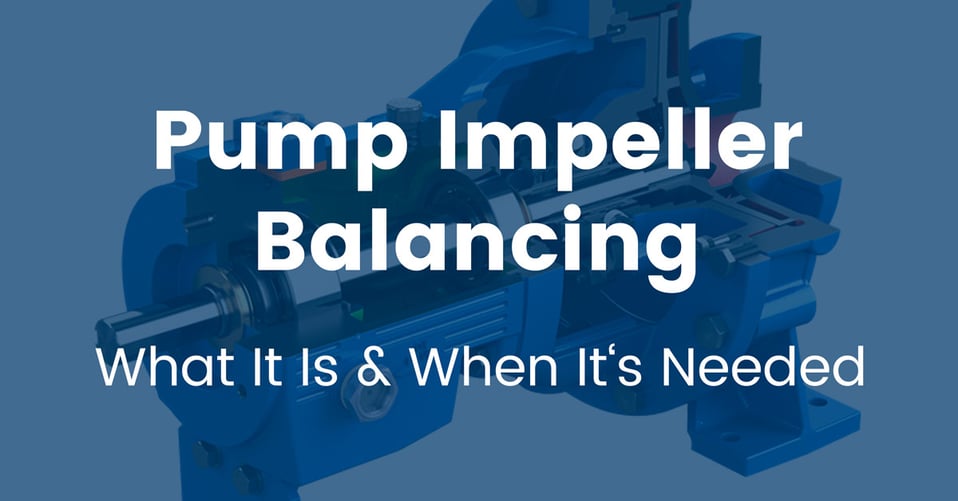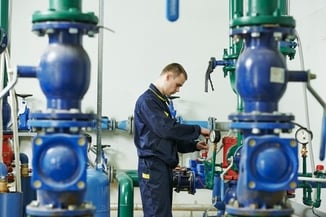Pump Impeller Balancing: When Is It Needed?

Pump impeller balancing is not a term that you’d frequently hear when dealing with pump repairs. However, when it does pop up, it usually means a tedious job of restoring the efficiency of a pump to its original performance. Let’s find out what pump impeller balancing is, why it’s needed and how to perform pump impeller balancing.
What Causes the Need for Pump Impeller Balancing?

An impeller pump works by rotating the impeller at very high speeds. Even with the best components, issues such as heat and vibration must be addressed. Vibrations need special attention as they usually signal that the system is not entirely balanced. In the case of pumps, there are certain limits specified by the manufacturer and anything beyond this specified limit can damage the pump.
During operation, the impeller spins at high speeds to push water or fluids while building pressure. This, in turn, causes the impeller itself to be under a tremendous amount of stress. In addition, the fluid may also contain abrasives that interact with the impeller surface. Over time, this process begins affecting impeller performance and it slowly begins to create imbalance.
An imbalanced impeller can be identified from the increased noise or vibration a pump makes. There will also be a reduction in pump performance. In industries where critical processes depend on pump efficiency, such losses can mean monetary and productivity losses.
When is Pump Impeller Balancing Needed?
The rate of wear on pumps depends on several factors. As a result, there is no exact timing for the rotor to go out of balance. However, the type of fluid, working hours, and temperature are some of the factors that play a significant role in the amount of wear that an impeller experiences throughout its useful life. Therefore, industries often plan fixed maintenance schedules to check pump working conditions.
The need for pump impeller balancing is often recognized from excessive vibrations or noise that the pump puts out. In industries, such factors are routinely checked in maintenance inspections. When your pump exhibits such characteristics, it is time to get the pump impeller checked for balance.
How Does Pump Impeller Balancing Work?
The process of pump impeller balancing begins with understanding the types of imbalance:
- Single plane imbalance
- Two plane imbalance
- Dynamic imbalance (a combination of single plane and double plane unbalance)
Since it is difficult to understand the type of balancing needed based on the vibrations or noise alone, specialized machinery is used to sense the imbalance. With a professional impeller balancing service, the impeller will be removed from the pump and then put on a computerized testing mount. The impeller is then made to spin, which will cause the imbalanced forces to act on the impeller. Specialized sensors mounted on the testing rack sense these forces to identify the type of imbalance. The necessary counterweight is then added to balance the impeller.
With such a system, it is possible to bring back the impeller to its original tolerances.
Authorized Pump Service with Hayes Pump
Since balancing the impeller requires specialized machinery and skills, it is better to leave these repair tasks in the hands of professionals. At Hayes Pump, we deliver 24/7 authorized pump service throughout the New England states. With computerized impeller scaling and balancing, we ensure that impellers are balanced to correct tolerances.




